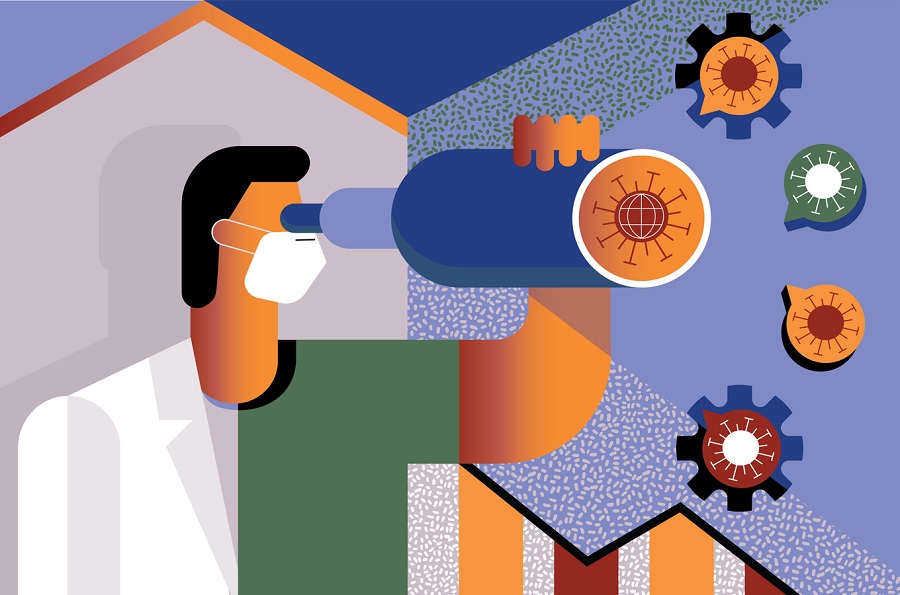The COVID-19 pandemic exposed how even advanced healthcare systems remain vulnerable. Hospitals overflowed, supply chains broke down, and governments scrambled to coordinate responses in real time. Joe Kiani, founder of Masimo and Willow Laboratories, has long argued that innovation must be designed for broad access, not reserved for the few. His career illustrates that resilience depends not only on technology but also on equity.
The pandemic revealed how quickly systems can be pushed beyond their limits, but it also highlighted where lasting reforms are possible. Building resilience is less about temporary fixes and more about embedding preparedness into routine care, supply chains, and public health planning. Framing resilience this way shifts the discussion from reacting to the last crisis toward creating structures that can withstand the next one.
The Cost of Being Unprepared
The human toll of COVID-19 was staggering millions of deaths, millions more with long-term complications, and healthcare workers pushed beyond exhaustion. Families lost caregivers and breadwinners, creating lasting social and economic gaps. Beyond the lives lost, economies worldwide contracted sharply. The World Bank estimated global GDP fell by 3.5 percent in 2020, marking one of the steepest declines in modern history.
Unpreparedness magnified inequalities. Affluent communities shifted to remote work and private care, while disadvantaged populations faced crowded housing, fewer resources, and higher exposure risks. School closures disrupted learning for millions of children, particularly in lower-income families, deepening cycles of inequality. These ripple effects demonstrate that failing to prepare is not only a health issue but also a profound economic and social risk.
The Role of Technology in Crisis Response
Despite the devastation, the pandemic proved that technology could fill critical gaps when systems are stressed. Telehealth visits rose by more than 1,000 percent in the early months of the pandemic, allowing patients to receive care while minimizing exposure. AI models helped researchers identify potential treatments, while machine learning tools assisted in predicting hospital bed demand.
Wastewater monitoring emerged as a surprisingly effective early warning system for local outbreaks. These technologies also left a lasting imprint, with many health systems now adopting them as routine surveillance tools for seasonal flu and other infectious diseases. Yet these benefits were unevenly shared. Rural areas without reliable internet and low-income populations without digital access often miss out. Technology can strengthen resilience only if designed and distributed inclusively. Otherwise, it risks reinforcing the very inequities that weaken system-wide response.
Prevention as a Cornerstone of Innovation
The most enduring lesson is that prevention saves more lives than reaction. Countries that invested in testing infrastructure, vaccination programs, and community health workers fared better than those that waited. Preventive measures reduced hospitalizations and costs, protecting both individuals and health systems.
Joe Kiani, Masimo founder, has consistently stressed that healthcare innovation should focus on preventing harm before it escalates. In his view, aligning investment with early intervention creates stronger outcomes and a more sustainable system. Prevention is not only compassionate but also economically wise, saving billions in avoidable treatment costs.
Equity and Access in Emergency Preparedness
The pandemic highlighted stark disparities. High-income nations secured vaccines quickly, while many low- and middle-income countries waited months or years. Within countries, minority and marginalized groups often experience higher infection and death rates due to structural inequalities.
Addressing equity requires intentional strategies. Vaccines and treatments must be distributed fairly, regardless of geography or income. Health information should be available in multiple languages and formats to reach diverse populations. Technology must be tested across skin tones, genders, and age groups to ensure accuracy for all. Fairness is not only ethical, but it also strengthens resilience by ensuring no population becomes a weak link in public health defenses.
Policy and Global Collaboration
Resilient health systems demand sustained policy commitments. The 21st Century Cures Act in the United States and the European Union’s Horizon programs have both encouraged data sharing and innovation. During the pandemic, initiatives like COVAX sought to distribute vaccines more equitably, though political and logistical challenges limited their reach. Still, they demonstrated the importance of cross-border collaboration.
National policies also need recalibration. Public health budgets must rise, data transparency must be prioritized, and preventive care should be incentivized. Policymakers should view resilience as a matter of national security, equal in importance to defense spending. Viruses cross borders freely, which means solutions must involve coordinated global frameworks that encourage information sharing, joint procurement, and shared accountability.
Building Systems That Endure
One of the greatest risks now is complacency. As the memory of COVID-19 fades, health systems may relax the measures that were put in place during the crisis. History shows that once an emergency passes, attention often shifts elsewhere. True resilience comes from embedding preparedness into the daily culture of healthcare rather than relying on temporary fixes.
Hospitals should maintain surge capacity, supply chains should be diversified, and health workers should receive continuous training. Such investments ensure that institutional memory is preserved, preventing hard-learned lessons from being lost as staff changes or budgets tighten. Investments in digital infrastructure must be sustained, not cut once the immediate threat recedes. Equally important, public trust must be rebuilt through transparency, clear communication, and inclusive design. Without trust, even the best-prepared systems will falter when compliance and cooperation are most needed.
Resilient Health for All
The pandemic left scars, but it also created opportunities to learn. Resilience is not just about surviving the next pandemic, but also about building systems that protect communities every day. It requires aligning technology, policy, and equity into a coherent framework that strengthens care at all levels. True resilience also depends on public trust, because communities that believe in their health systems are more likely to follow guidance and adopt innovations when crises emerge.
Joe Kiani, Masimo founder, has emphasized that unless inclusivity drives design and distribution, innovation risks deepening rather than closing divides. His reminder reinforces that equity is not just a moral principle but a practical necessity for building durable systems that work for all communities.








